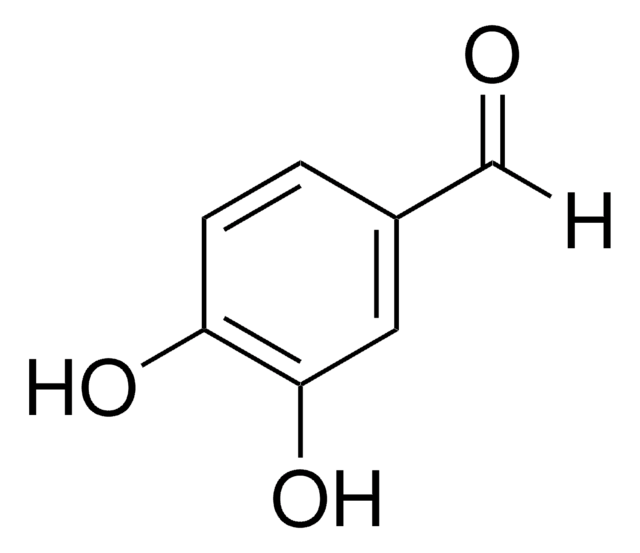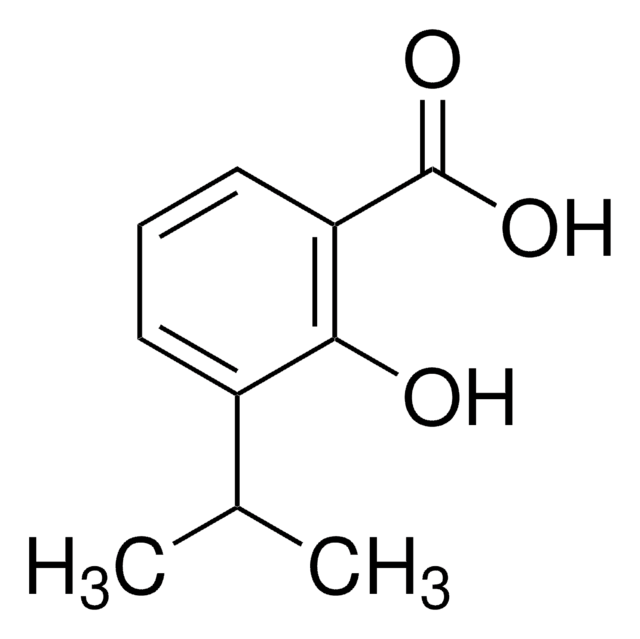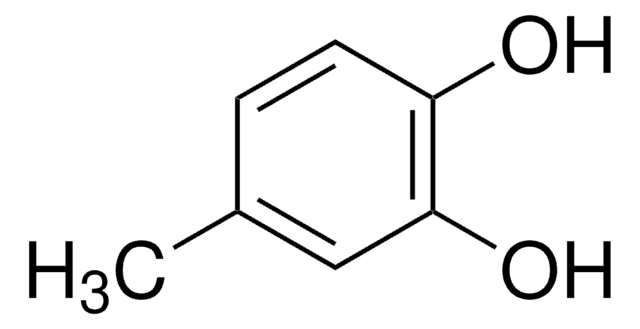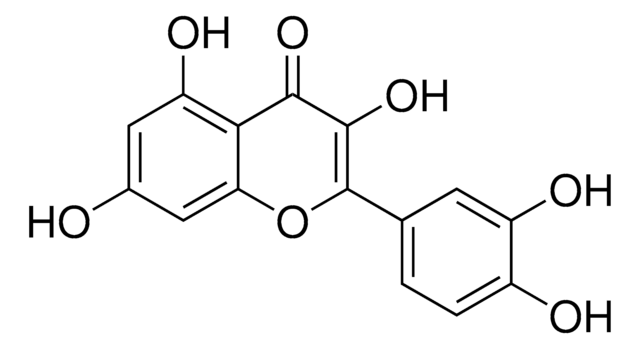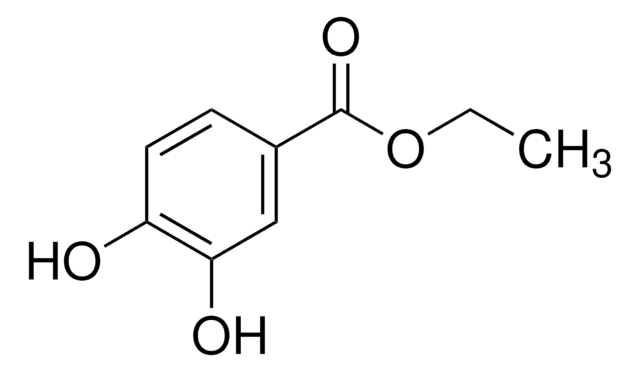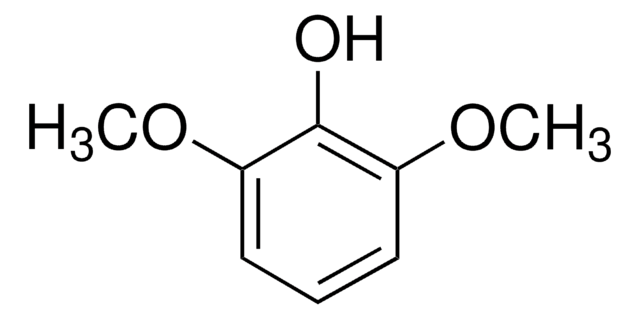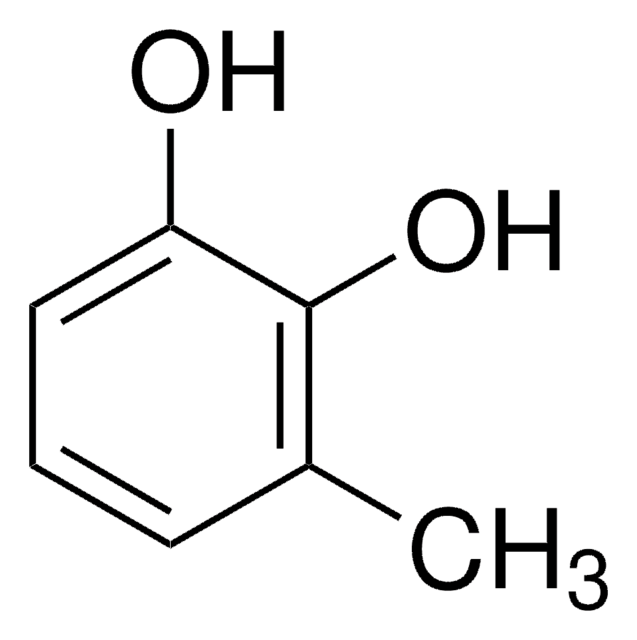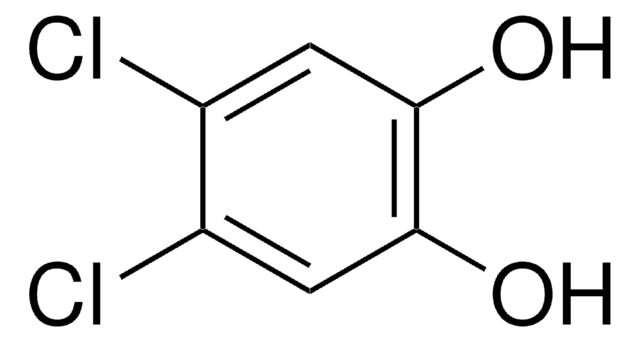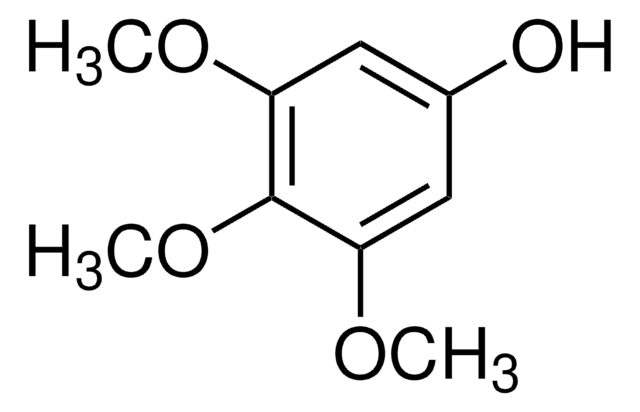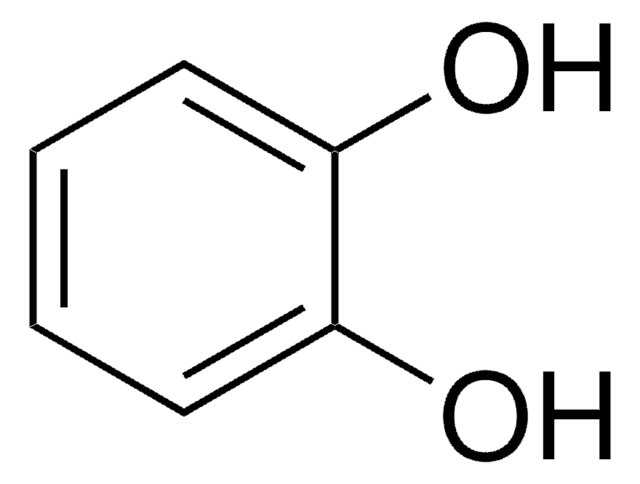M13203
3-Methoxycatechol
99%
Synonym(s):
1,2-Dihydroxy-3-methoxybenzene, 3-Methoxypyrocatechol, Pyrogallol monomethyl ether
Sign Into View Organizational & Contract Pricing
All Photos(1)
About This Item
Linear Formula:
CH3OC6H3(OH)2
CAS Number:
Molecular Weight:
140.14
Beilstein:
1909165
EC Number:
MDL number:
UNSPSC Code:
12352100
PubChem Substance ID:
NACRES:
NA.22
Recommended Products
Quality Level
Assay
99%
bp
146-147 °C/15 mmHg (lit.)
mp
38-43 °C (lit.)
SMILES string
COc1cccc(O)c1O
InChI
1S/C7H8O3/c1-10-6-4-2-3-5(8)7(6)9/h2-4,8-9H,1H3
InChI key
LPYUENQFPVNPHY-UHFFFAOYSA-N
Looking for similar products? Visit Product Comparison Guide
Signal Word
Warning
Hazard Statements
Precautionary Statements
Hazard Classifications
Eye Irrit. 2 - Skin Irrit. 2 - STOT SE 3
Target Organs
Respiratory system
Storage Class Code
11 - Combustible Solids
WGK
WGK 3
Flash Point(F)
Not applicable
Flash Point(C)
Not applicable
Personal Protective Equipment
dust mask type N95 (US), Eyeshields, Gloves
Choose from one of the most recent versions:
Already Own This Product?
Find documentation for the products that you have recently purchased in the Document Library.
M Hirose et al.
Japanese journal of cancer research : Gann, 81(9), 857-861 (1990-09-01)
The effects of sodium nitrite (NaNO2) and catechol or 3-methoxycatechol in combination were examined in male F344 rats. Animals were treated with 0.3% NaNO2 in the drinking water and 0.8% catechol or 2% 3-methoxycatechol in powdered diet for 24 weeks.
M Kawabe et al.
Japanese journal of cancer research : Gann, 85(1), 17-25 (1994-01-01)
The effects of combined treatment with NaNO2 and phenolic compounds on N-methyl-N'-nitro-N-nitrosoguanidine (MNNG) stomach carcinogenesis were investigated in F344 rats. In the first experiment, groups of 15-20 male rats were treated with an intragastric dose of 150 mg/kg body weight
Keith M Anderson et al.
The Journal of organic chemistry, 72(26), 9875-9880 (2007-11-30)
A novel universal support for deoxyribo- and ribonucleic acid synthesis has been developed. The support, constructed from 1,4-dimethoxycatechol, represents an improvement over existing universal supports because of its ability to cleave and deprotect under mild conditions in standard reagents. Because
Ying Tao et al.
Journal of bacteriology, 186(14), 4705-4713 (2004-07-03)
Wild-type toluene 4-monooxygenase (T4MO) of Pseudomonas mendocina KR1 oxidizes toluene to p-cresol (96%) and oxidizes benzene sequentially to phenol, to catechol, and to 1,2,3-trihydroxybenzene. In this study T4MO was found to oxidize o-cresol to 3-methylcatechol (91%) and methylhydroquinone (9%), to
Sam J B Mallinson et al.
Nature communications, 9(1), 2487-2487 (2018-06-29)
Microbial aromatic catabolism offers a promising approach to convert lignin, a vast source of renewable carbon, into useful products. Aryl-O-demethylation is an essential biochemical reaction to ultimately catabolize coniferyl and sinapyl lignin-derived aromatic compounds, and is often a key bottleneck
Our team of scientists has experience in all areas of research including Life Science, Material Science, Chemical Synthesis, Chromatography, Analytical and many others.
Contact Technical Service